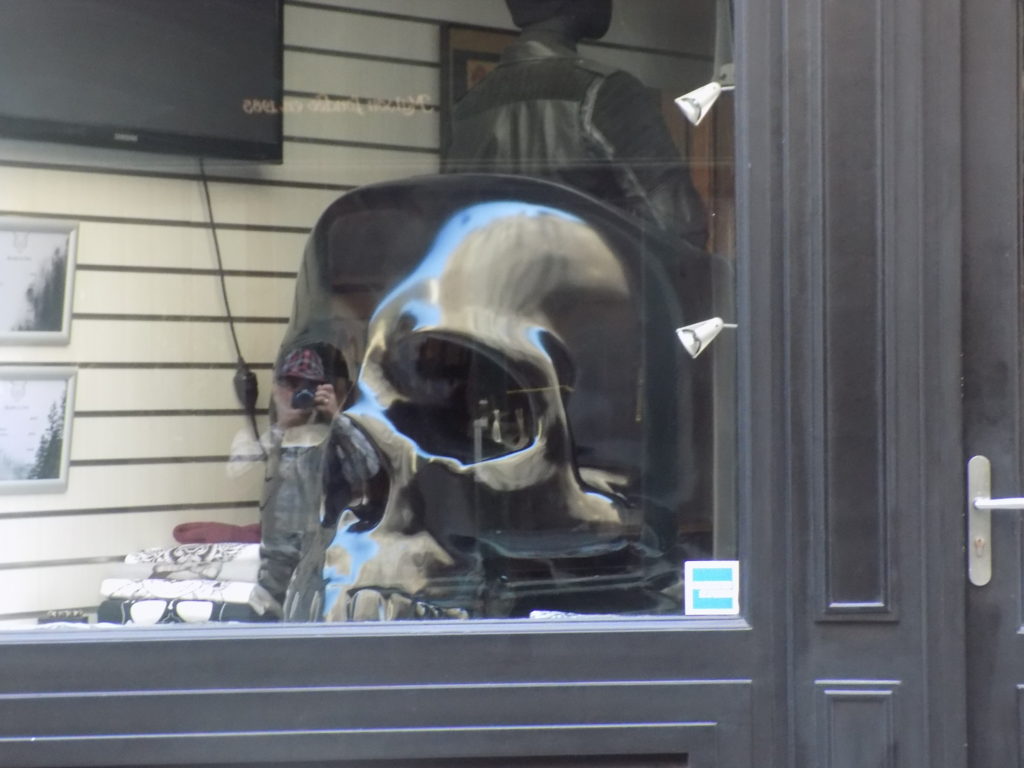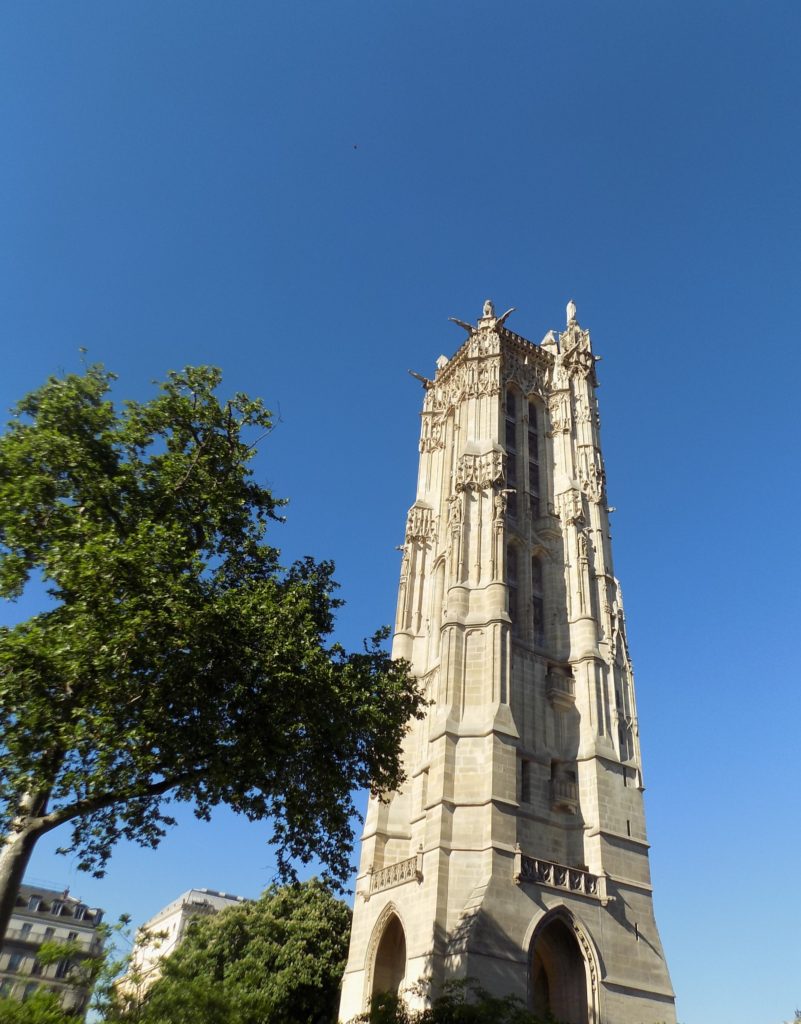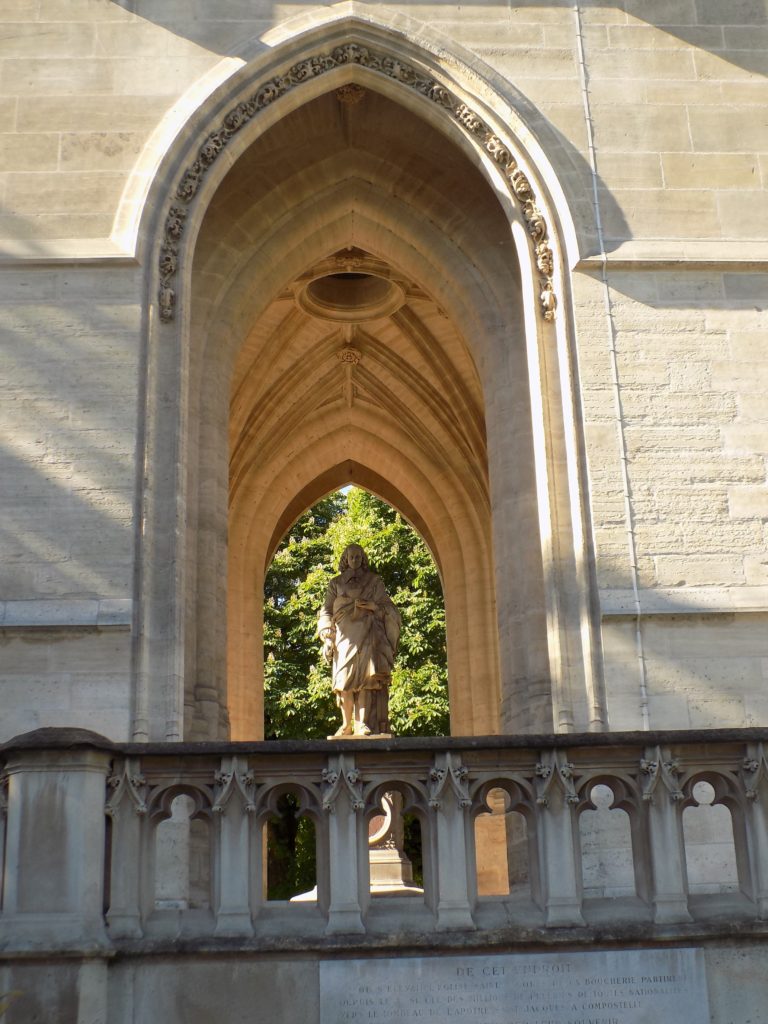Draw the shade and pour yourself a strong one. This is the last entry and it’s gonna be a long one.
(The header above will make sense when I tell you that in its initial incarnation, this was a nearly 5,000 word post. I have edited it into four shorter segments.)
We started Monday with even less of our day planned than we’d had on Sunday but it was our last full day in Paris so what better way to close the travel circle than to let our feet carry us to destinations unknown. The first order of business was breakfast so we exited the building on the more commercial rue de Rivoli side where a right turn would take us east toward the Bastille and left would send us in the general direction of the HĂ´tel de Ville and the Louvre. We chose left.
After walking just a few hundred meters, we reached a small square opposite the mairie (town hall) of the fourth. (You may recall from an earlier post that each arrondissement has its own council and mayor.) The square was lined with cafés but we wanted to sit outside and the traffic noise along the rue de Rivoli was a bit overbearing so we walked a block farther to the (not much quieter) Little Café.
We dropped ourselves down and had our last typical French petit-dĂ©jeuner – croissants, juice and of course tea (well, for me). As had been the case at dinner last night, our server didn’t speak much English but she seemed so irrepressibly happy that I found her attitude infectious and hoped it would serve as the day’s omen rather than the symbols eying us from across the street – a black cat in a second-floor window and this
macabre gent (or lady) staring at us from a shop window.
For me, one of the small pleasures of European travel is the opportunity to alter my perception of the flow of time. We lingered over breakfast longer than was necessary to merely consume the meal. With nothing planned, we lazily allowed the day to spread slowly in front of us. Attaching our laissez faire schedule to the hospitality of the French café that allows diners to linger undisturbed for as long as they please seems to slow time to a manageable pace that, while not quite meditative, allows ample space for conversation or contemplation.
The Tower and The Way.
When we were ready to move on, we paid the check and returned to our westward stroll along rue de Rivoli. I focused on a tower that looked to be perhaps half a kilometer distant. We’d seen the tower from different viewpoints on some of our earlier peregrinations but I’d assumed it was merely another church. I’d probably have given it little thought had we not been walking in that direction and had it not been nearby. As we drew closer it became clear that it was just the tower standing on its own –Â independent of any larger structure. That piqued my interest.
I learned from the sign on the fence encircling the small park where the tower stood that in French it’s the Tour Saint-Jacques, in English, Saint Jack’s (or Saint John’s) Tower but a third translation sparked my imagination. This was the Spanish name on the sign – La Torre de Santiago. I’ll circle back to this shortly but first, as I typically do, I’ll tell you a bit about the tower.
The first written record of a church on the site dates to 1259 and its construction was sponsored by the nearby Great Butchery Corporation, hence its official name – Eglise Saint-Jacques-de-la-Boucherie (Church of Saint James of the Butchery). Construction of the Flamboyant Gothic bell tower looming above us began in 1509 and was completed in 1522.
The church itself was demolished in 1797 by the revolutionary government but they left the 54-meter-tall bell tower standing so it could be used to produce lead shot.
(The process for making shot, invented in 1782 by William Watts of Bristol, UK, involved heating lead until it became molten then dropping the liquid through a copper sieve from a point high enough that, utilizing the process of surface tension, shaped the droplets into round pellets. Basins of cold water sat at the bottom of the tower to promptly cool the shot. Perfectly round shot could be used in shotguns and shot that was less than perfectly round could be remelted or used for another purpose such as ballast.Â
On an even more peripheral aside, as a boy growing up in Baltimore, the Old Shot Tower {originally known as the Phoenix Shot Tower then as the Merchants Shot Tower} was among the prominent features of the downtown skyline. Two traits made it particularly notable. First, it was built without exterior scaffolding. Second, when construction on the 74-meter {234 feet} tall tower was completed in 1828, it was the tallest structure in the United States and remained so until 1846 when it was surpassed by the spire topping Trinity Church in New York City.)
The re-purposed Tour Saint-Jacques remained in use until 1836 when it was abandoned. Sometime in the mid to late 1850s, Baron Haussmann created the square that now surrounds the tower and the structure received protected status in 1862. It was fully renovated in the first decade of the 21st century and opened to the public in 2013. This statue can be seen from the street. It honors the mathematician Blaise Pascal.
Pascal is there because in the middle of the 19th century, he used the tower to repeat the experiment he had supervised at Puy de DĂ´me in 1848 in which he proved that air pressure decreases as altitude increases.
Pat and I didn’t visit the Tower but, if you like great views of the city, it’s certainly worth going to the top as the video below shows.
In the next post, I’ll return to the importance of the tower’s Spanish appellation.


